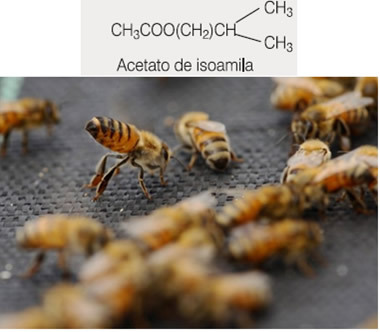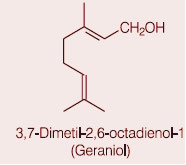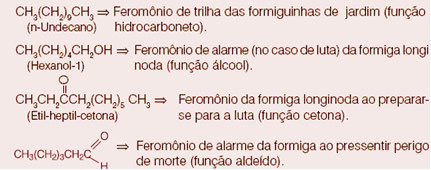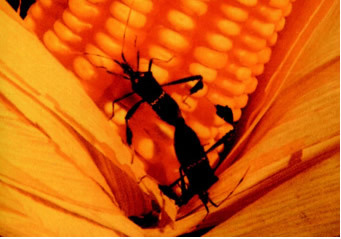Pheromones are chemical substances secreted by an individual that allow them to communicate with other individuals of the same species. The chemical message transmitted by pheromones aims to stimulate certain behavior, which can be alarm, aggregation, contribution to food production, defense, attack, mating, etc.
The term “pheromone” can be used to indicate either a particular substance or a mixture of substances. They were discovered in 1950. In 1959, German researcher Butenandt managed to isolate and identify the first pheromone known as bombicol ((10,12)-hexadecadien-1-ol), which is the pheromone of the silkworm moth Bombyx Mori. He needed to kill 500,000 females of this insect to get just 1 mg of the active substance.
Insects are the ones that release this type of chemical compound the most, but they are not the only ones; mammals (such as mice, cavies, pigs, dogs and even humans) also carry out this olfactory communication.
However, usually each animal species produces a different pheromone that is recognized only by members of its own species.
For example, the pheromone released by a female dog when she is in heat to attract male dogs for mating does not attract animals of other species, such as pigs. But there is also no selection of breeds, and this bitch will attract dogs of any breed around.
In the case of insects, this language is even more intraspecific. For example, foot wash ants will not understand the language of lemon ants and vice versa.
Insects such as bees, ants and flies are notable examples of the use of pheromones. See the case of beesthat, when danger occurs, they exhale a pheromone into the air that serves as a warning for other bees to flee. The following is the structure of the alarm pheromone of the Appis mellifera, which is a compound of the organic function of the esters.

The bee also uses specific pheromones to indicate the location of water or the route to get to the flowers' nectar and return to its hive without getting lost along the way. This is especially important because bees see a very short distance. On days of rain and wind, many bees end up dying, because this pheromone is a volatile chemical substance, very dilute and therefore the trail can be undone. Below we have the trail pheromone of the Appis honey, which is from the alcohol function.

Ants also have pheromones for alarm and to mark the path to the anthill, as shown below:

But the most studied pheromones that have more agricultural use are the sexual, excreted by the female and in many cases also by the male, used to attract the partner for copulation and thus preserve the species through procreation.
An example of a sex attractant excreted by females from house fly is cis-9-tricosene, shown below. Its isomer in form trans it does not have the property of acting as a pheromone.
CH3 ─ (CH2)7 ─ C ═ C ─ (CH2)12 CH3
│ │
H H
Some insects use tetradec-3,5-dienoic acid as mating pheromone:
H
│
HOOC ─ CH2 ─ C ═ C ─ C C ─ (CH2)7 CH3
│ │ │
H H H
Note that this pheromone has the hydrogens of carbons 3 and 4 of the double bond in the form trans, one on each side of the plane; while the hydrogens of carbons 5 and 6 are in the form cis. The change of position of the groups linked to one of these unsaturations would correspond to another substance with different properties and which would not be recognized by the insect.
THE agriculture uses these sex pheromones to rid crops of certain insects. This is done by synthesizing the correct pheromone isomer in the laboratory and using it in traps as bait to attract insects and hinder their proliferation. Below is the example of the dark bug Leptoglossus zonatus copulating after the release of sex pheromones. This insect is considered one of the biggest corn pests in Brazil.

This method has many economic and ecological advantages, as these substances are harmless to humans and avoid the use of insecticides, preserving the environment.
Between the human beings, pheromones are present in women, which regulate their menstrual cycle according to other women with whom they live.
By Jennifer Fogaça
Graduated in Chemistry
